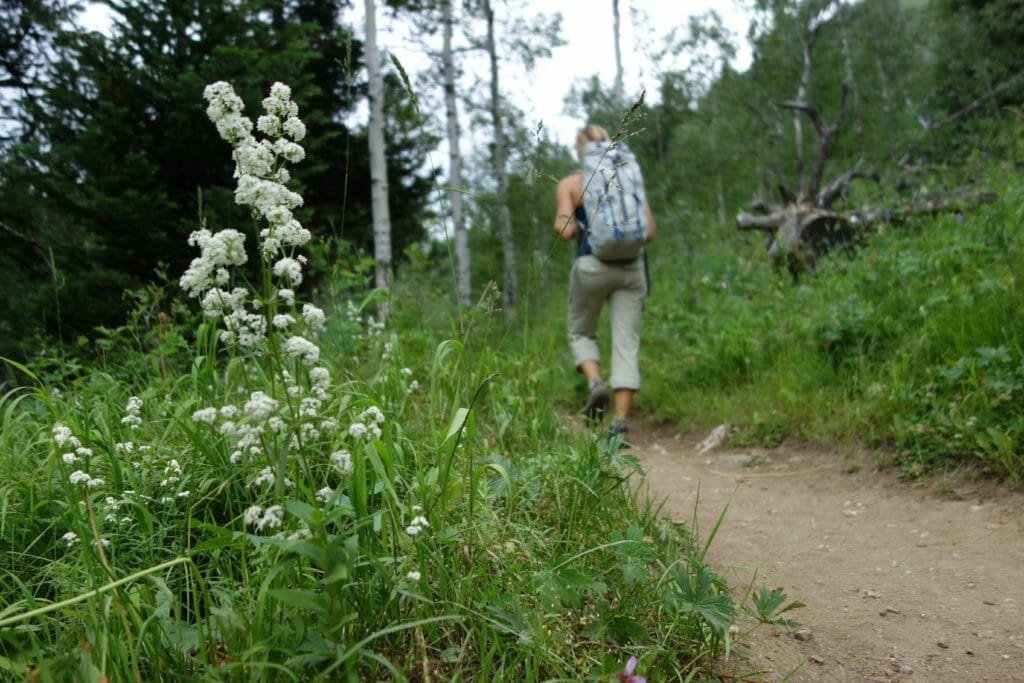Although there may be some debate whether strenuous exercise may compromise immunity, it’s important to recognize that training IS stress. Training is also just one of many other stressors that all athletes, from recreational to elite, will face in their daily lives. The key to remember is that although there are many stressors that we don’t have control over, training is the one exception.
Athlete immunity goes beyond just training
Imagine that you’re playing a game of Jenga. You pull away the plastic pile guide. One by one, you pull out blocks and stack them on top. At some point, the tower falls. When it does, which block is responsible? The top one, right?
No, not really. The position of every block contributes to the instability of the tower. The last block was just the last straw.
Blaming the last block is a case of the single-factor fallacy. We give one cause among many all the credit for the outcome.
Susceptibility to infection is influenced by a multitude of factors and recognizing that exercise is stress is key to acknowledging that balancing all stressors is important for staying healthy. Even though you may consider exercise to be a “good” stress, your body doesn’t actually know the difference between “good” vs. “bad” stress.

Stress comes from many factors
Many athletes will use the “more is better” or “no pain, no gain” approach to endurance training. Have you ever set off for a recovery run to realize you feel great and try to reclaim that Strava QOM? No judgment here! Many busy athletes will try to cram as much training as they can into the pockets of their lives, but these are usually the same athletes who are always the first to catch the latest cold or flu.
It could be easy to think the training load is the problem- and it might be. However, even a well-balanced training load and progression could be the block that topples the Jenga tower if it’s happening at the same time as tax season, a new job, a move to a new city, or other bumps in daily life stress.
While we organize training in a periodized fashion to balance hard days with easy days, long outings with rest days, we often don’t think about how life stress doesn’t always match the training plan. If you are increasing a training stimulus (more volume, more intensity, etc.), be mindful about your baseline daily life stress. If you know you will have a higher stress load, it would be a good idea to think about incorporating a bit more rest than cramming in an extra workout.
We all keep a lot of data these days- keep an eye on the changes you see happening and learn when you need to give yourself a bit of extra support. Increased resting heart rate? Less than 5 hours sleep for a few days in a row? Give yourself a little grace to pay attention and listen to the signs your body is giving you.
Stay healthy by managing your stress
Ask yourself some key questions:
- What margin of safety do I need to deal with the unexpected and still stay healthy?
- With that margin of safety, do I have enough remaining bandwidth for the training I need to reach my goals?
- If not, can I decrease my baseline stress?
- If not, can I accept the bandwidth that I have available and dial back my training instead?
1. What margin of safety do you need to stay healthy?
At best, training is fudgy and imprecise, so it’s silly to try and come up with an exact margin of safety. Instead, what works well is to never go to your limits in training. High intensity fans will hate the thought of delayed gratification, but it’s much more sustainable in the long term.
Always aim to have one more hour or one more interval left in the tank. Do as much as necessary, not as much as possible. Otherwise, you’re grinding yourself down. You’ll get weaker over time and, eventually, sick.
2. Do you have enough bandwidth available?
There’s a reason that many pro athletes live like monks. The fewer external stressors they have, the more time and energy they can devote to training. In contrast, the “go hard or go home” approach to cram everything in is an exercise in playing with fire- eventually you will get burned (out).
The former is performance-driven and says no to anything that doesn’t contribute to the goal. The latter is gratification-driven and says yes to anything and everything.
If we have responsibilities that aren’t important, we need to get rid of them. If they are important, we have to accept them and work around them or with them.
Our total bandwidth is what’s between our baseline and our breaking point. Our baseline is the number of inescapable demands on us. Our breaking point is our mental/physical limits.
3. Can you decrease your baseline stress?
Baseline stress can be represented as anything external, primarily work, people, and travel.
Can you work less? Or in a less-demanding job? Can you spend less time with stressful people? Can you avoid non-essential travel?
4. Can you increase your breaking point or just need to accept and work with the bandwidth you have?
While baseline stress can be seen as external, resilience and vulnerability are internal. So what can we do to decrease vulnerability?
The primary factors are food, sleep, and attitude.
- Are you eating well? Is your diet nutritious and free of processed food and alcohol?
- Do you sleep at least eight hours per night? Can you take a nap in the afternoon?
- Can you improve your attitude in a practical way? Can you let go of what you can’t control?

How do we define " strenuous exercise"?
Strenuous exercise will be defined differently in terms of an athlete’s training history, level of ability, training status, etc. Kilian Jornet’s recovery day might leave many people on their knees gasping for air. The important point to remember is that workouts of higher intensity and longer duration will have greater recovery needs. If you don’t give yourself appropriate recovery time and support that with balanced stress, good sleep, and good nutrition, you are likely digging a little hole that could lower your immunity.
All stress has an impact
Athletes need to learn what their own limits are and to look at the subtle signs that they might be pushing their limits. When they recognize that limit approaching, it’s a good idea to look at all the factors contributing to stress and determine which ones they can manage or reduce. With a little bit of grace and humility, it’s possible to balance all the things life throws at us, while enjoying training and staying healthy.
This article was originally published by Scott Semple.

